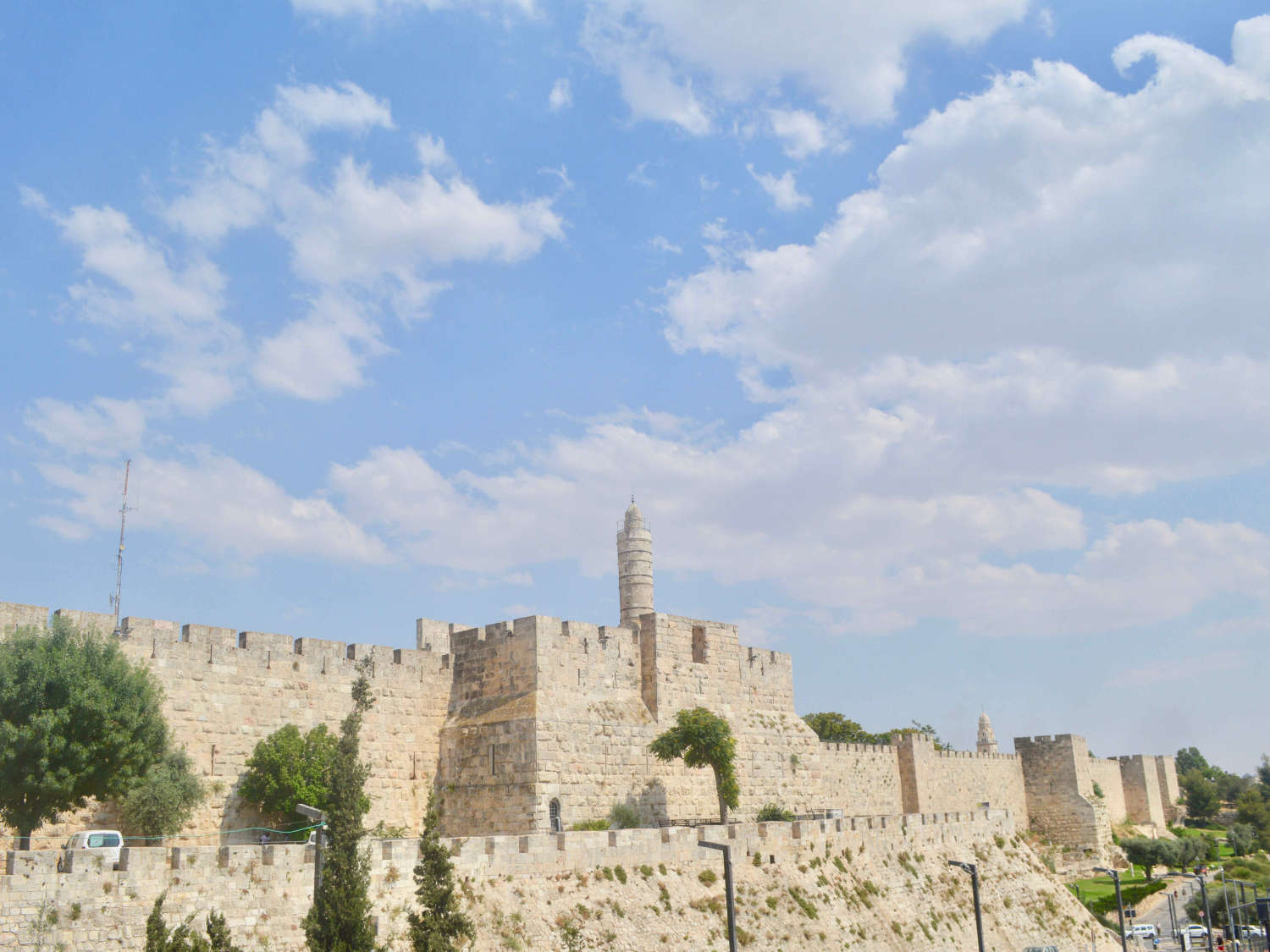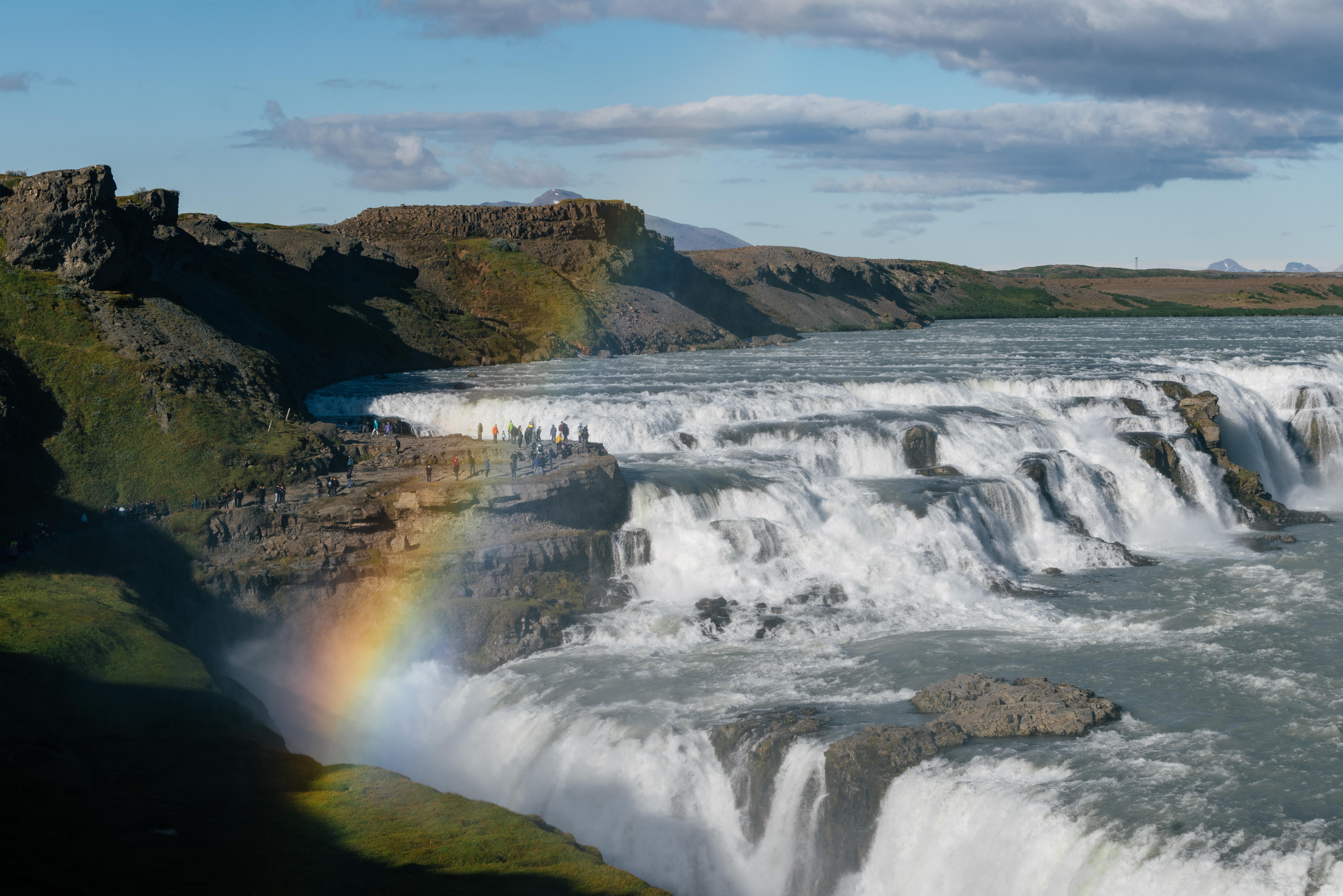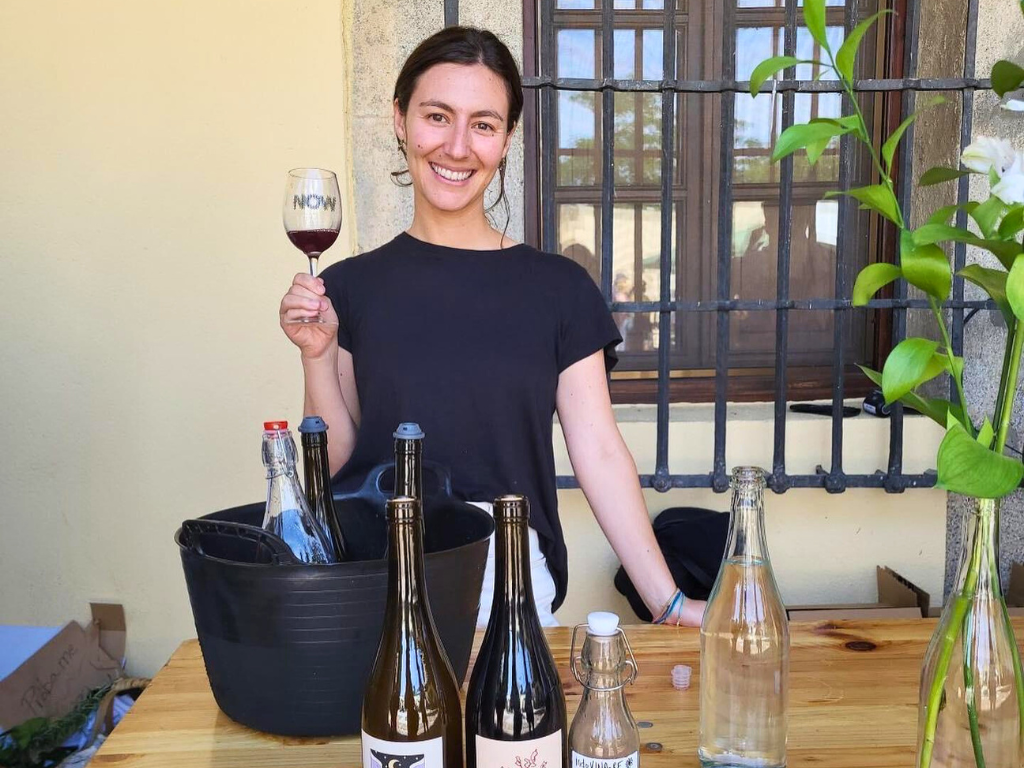With its combination of the religious, the bizarre, the humorous, the tender and the surreal, Jerusalem’s Old City beckons. Whether on a private tour of Jerusalem or through self-directed wanders, the city’s intricate mosaic of religions and traditions is sure to astound. Here is our expert Gil Zohar’s guide to Jerusalem:
Get to know Jerusalem’s Old City
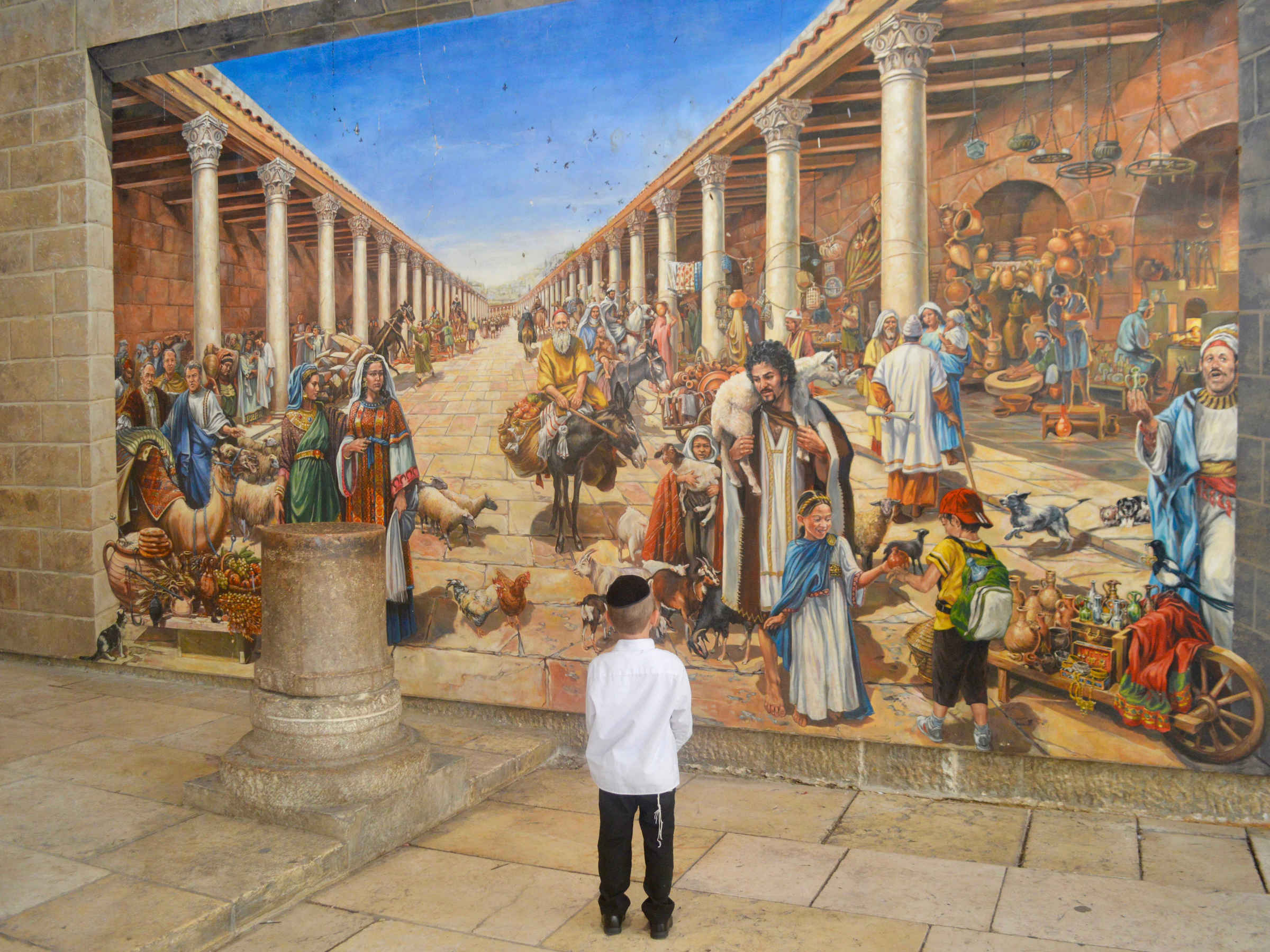
Some 30,000 people live today in the colorful labyrinth of Jerusalem’s historic walled city, known as al-medina al-qadima in Arabic, and ha-ir ha’atika in Hebrew. The crowded Old City, measuring roughly one square kilometer, is an architectural patchwork—the result of layering medieval Arab urban planning on top of a classical Roman city whose original structures date to Hadrian’s rule in 135 C.E. In addition to his legacy of buildings, Hadrian also left the region with a lasting name: after massacring the Judeans and exiling remaining survivors, the genocidal emperor changed the name of the rebellious Roman province from Judea to Palestina, recalling the Jewish peoples’ biblical enemy the Philistines.
The Old City is divided unequally into the Jewish, Christian, Muslim, and Armenian quarters, with the main drag of the Cardo (think “cardiogram”) running north-south through the Roman enclave. Archaeologists first uncovered sections of the Cardo some 2,000 years ago, including the intersecting east-west Decamanus and the ancient Forum.
Until 160 years ago, the Old City’s seven gates were locked every night, giving an extra security layer to the thick walls and towers; today, the gates remain open at night under the watchful eye of CCTVs.
Friday in the Old City
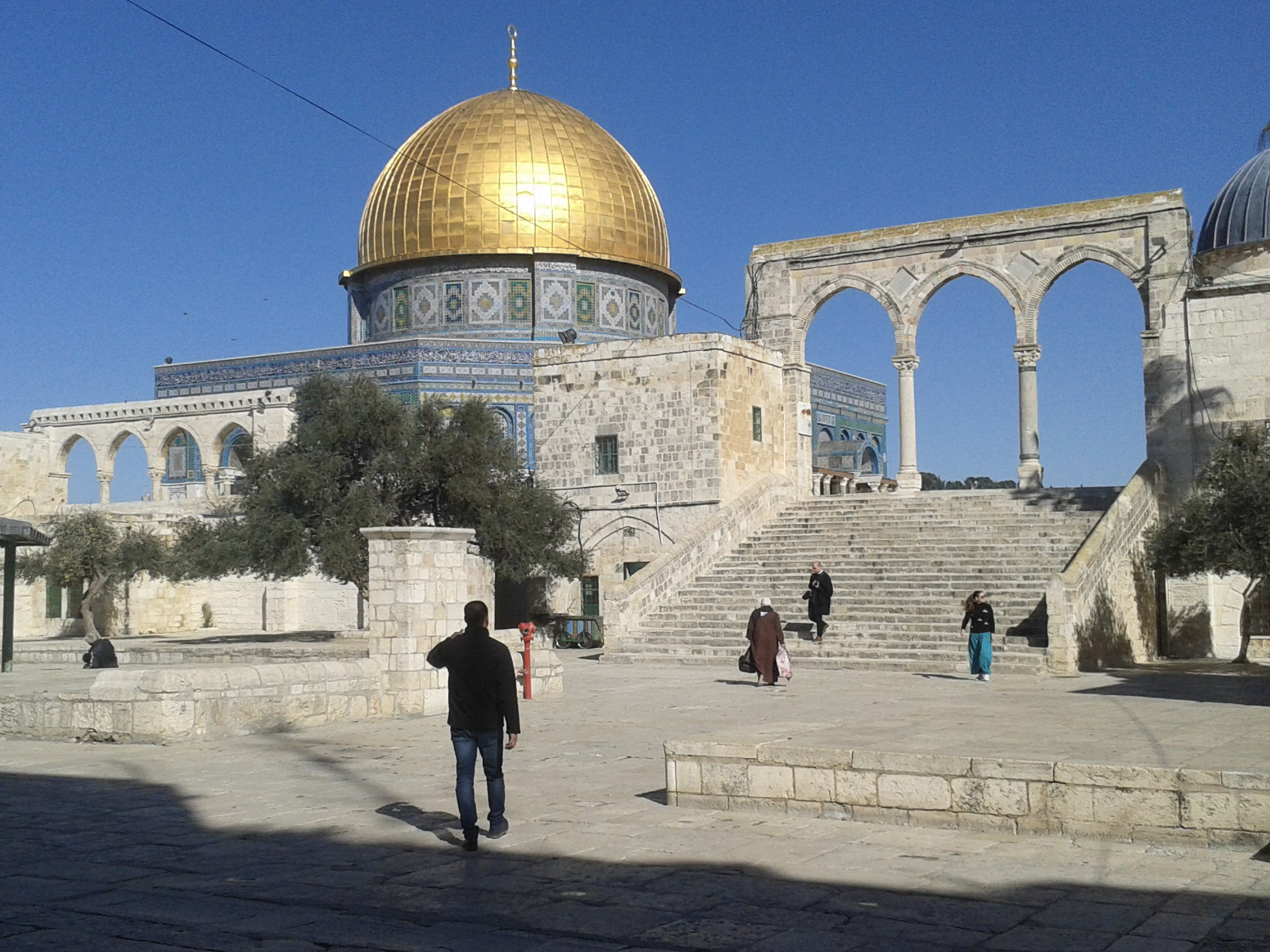
Friday is the best time to experience Old Jerusalem’s unique spiritual atmosphere. In the morning, tens of thousands of Muslims stretch out their prayer rugs at al-Aqsa Mosque. Though Jerusalem is not mentioned explicitly in the Quran, the hadith (Islamic teachings) interprets al-Aqsa as the furthest mosque Muhammad visited on his Night Journey. Worshippers ritually wash their feet and turn barefoot to face the Ka’aba in the Grand Mosque in Mecca, Saudi Arabia, with spillover from the worshipping crowd lining up in neat rows by the octagonal, golden-roofed shrine called the Dome of the Rock.
(A note for visitors: non-Muslims are not permitted to join the prayers or even step inside the sacred buildings. Fridays in holy buildings are haram—restricted to Muslims, and any non-Muslim religious paraphernalia seen inside will be confiscated.)
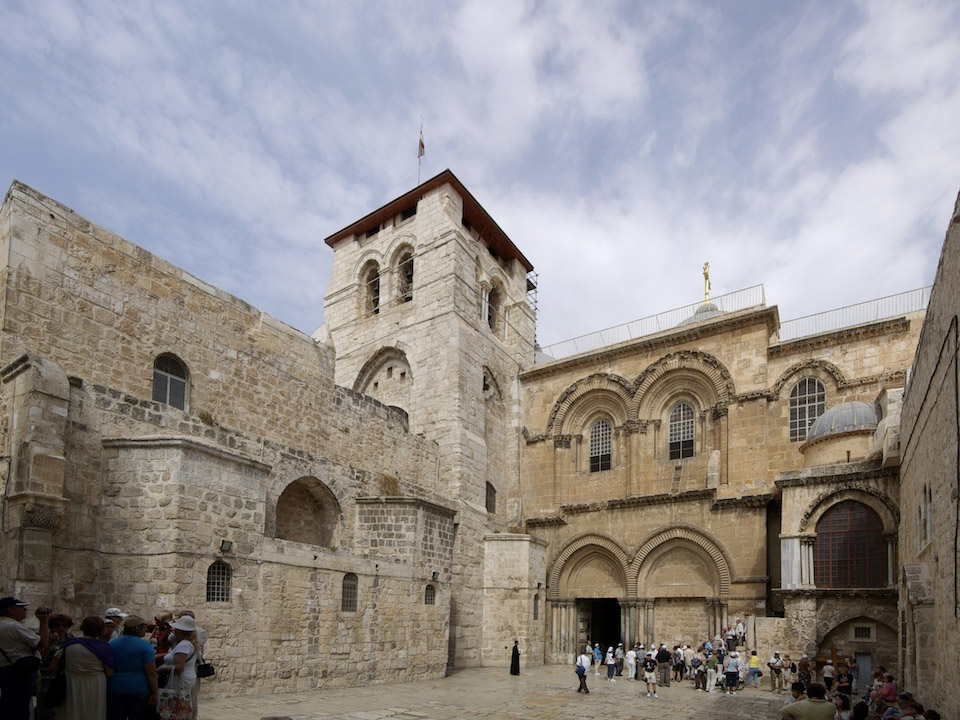
On Friday afternoon, Franciscan friars carrying a heavy crucifix lead a Roman Catholic procession along the Via Dolorosa—Latin for “the way of the sorrows.” The photogenic pilgrimage winds through the steep alleys to Skull Hill, also called Calvary or Golgotha. Here the sprawling Crusader-era (1099-1291 CE) Church of the Holy Sepulcher marks where Jesus was crucified, buried, and, Christians believe, resurrected in c. 34 C.E. Everyone is welcome to join the pageant.
Fridays at sunset, myriad Jews wearing white shirts and blue jeans, along with hassidim dressed in their Sabbath silks and fur hats (called shtreimlakh in Yiddish) assemble at the Western Wall. Their gathering point is a surviving section of the retaining ramparts around King Herod the Great’s monumental Second Temple, destroyed by the Romans in 70 C.E. The crowd gathers to greet the once-a-week Sabbath Queen with raucous song and dance. Look hopeful and there’s a good chance you’ll get invited to someone’s home for Sabbath dinner.
What about your camera? While you may want to document the religious celebration, it’s best to put your electronics away during the 25-hour Sabbath, lest you offend worshippers.
Armenian Traditions
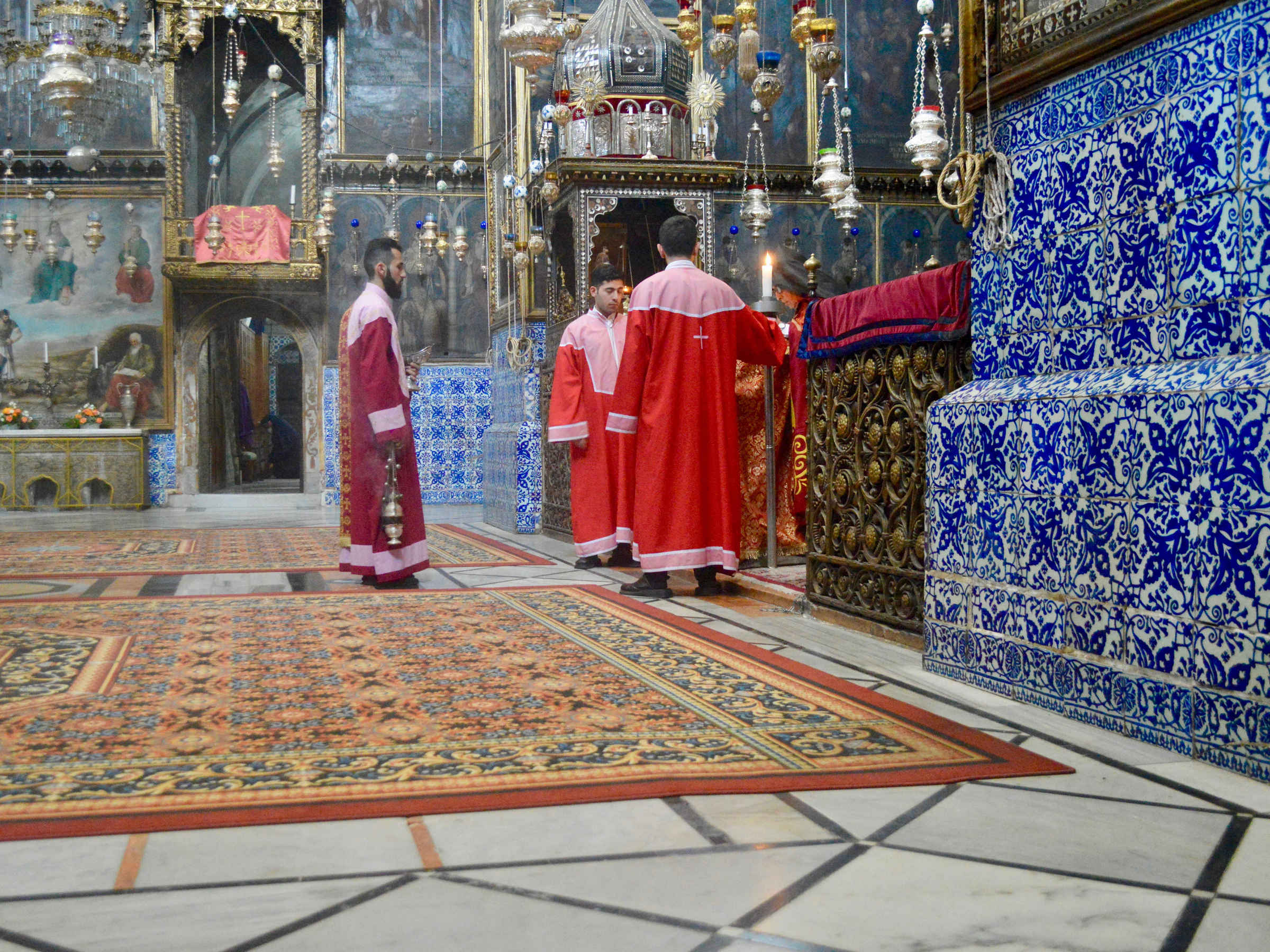
Every Monday to Saturday at 3 p.m., Armenian seminary students chant the vespers service at the Crusader-era Cathedral of St. James in the Armenian Quarter. The 12th-century basilica is dedicated to two early Christian saints: James, son of Zebedee (James the Greater, one of Jesus’ 12 apostles); and James, brother of Jesus (James the Just, or the Lesser).
Left of the sanctuary is the Chapel of St. James the Great, infamous as the site where King Herod Agrippa ordered James’ beheading in 44 C.E. The Saint’s head was interred under the altar, now marked by a piece of red marble and surrounded by six votive lamps. (Though if you want to pray at the tomb of his body, you’ll have to make the pilgrimage to Spain’s Santiago de Compostela. According to legend, Saint James the Great first brought Christianity to the Iberian Peninsula; in recompense, after being martyred in Jerusalem, his remains were returned to Spain.)
While there, take note of the wooden gong to the right of the entrance. Deacons strike a beater to commence church services. Under the Ottomans (1517-1918), the Armenians were forbidden from ringing church bells. Their persecution culminated in the Armenian genocide of 1915, also memorialized in the church’s courtyard entrance.
A Confluence of Religions (and calendars)
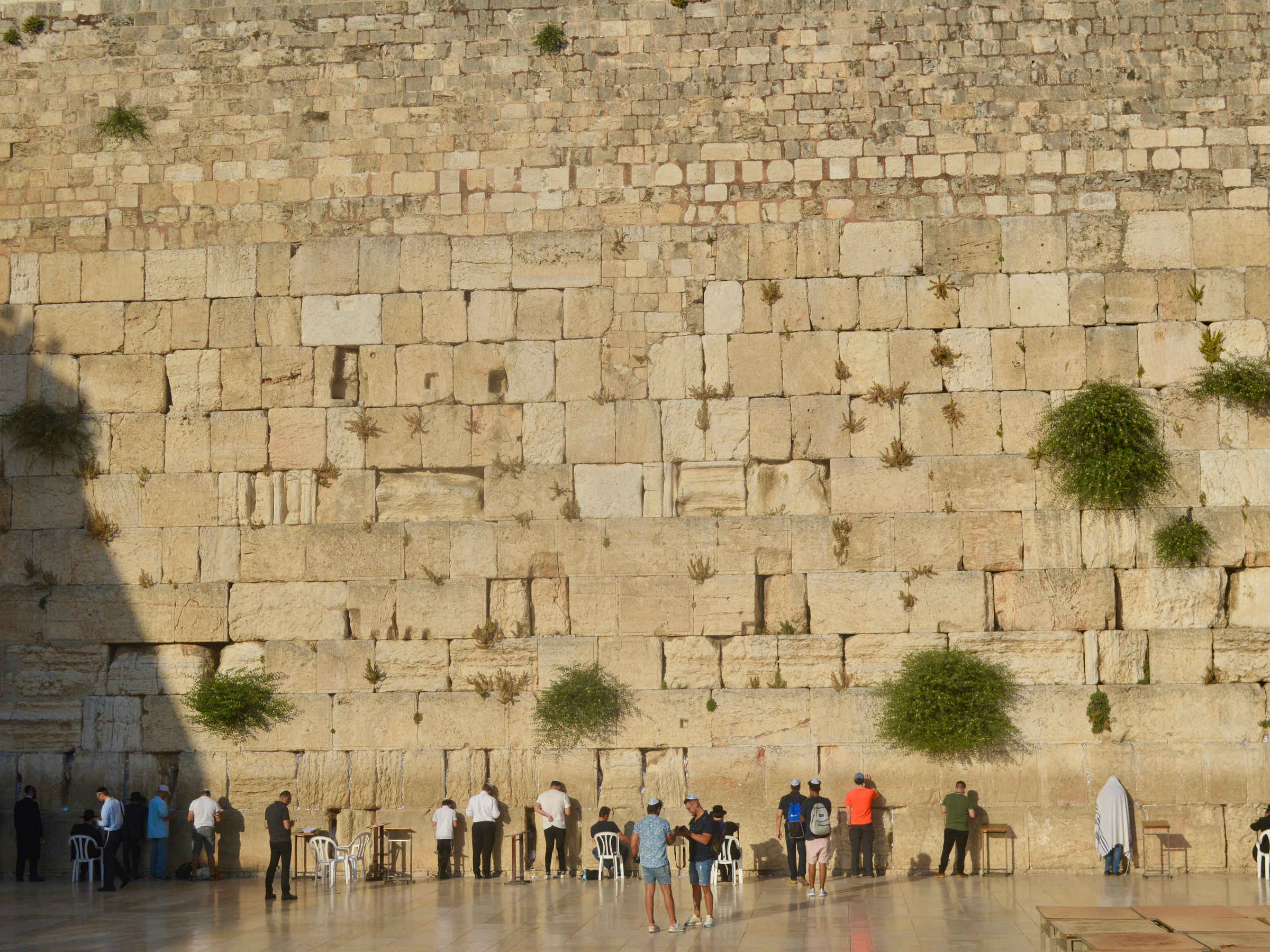
While Jerusalem’s Jews and Muslims live in the January 1 to December 31 Gregorian (solar) calendar, they also measure the passage of time in the rhythm of their respective lunar calendars. When visiting Israel, keep in mind that Jews, whether religiously observant or not, close their businesses and restaurants from Friday afternoon until Saturday sunset. Christians do the same on Sunday, and Muslims on Friday.
Perhaps the most illustrative manifestation of Israel’s calendar crisscross is this: Jerusalem and neighboring Bethlehem are the only places in the world where Christmas is celebrated three times—December 25 by Catholics and Protestants, January 6 by Greek and Russian Orthodox, and January 19 by Armenians.
Confused yet? Let Context help you navigate Jerusalem’s interlocking alleys, cultures, and traditions with one of our private Jerusalem tours.
Gil Zohar was born in Toronto, Canada and moved to Jerusalem in 1982. A licensed tour guide and journalist, he writes extensively about religion and the Middle East. As a tour guide, he loves to weave together the region's multiple narratives.
